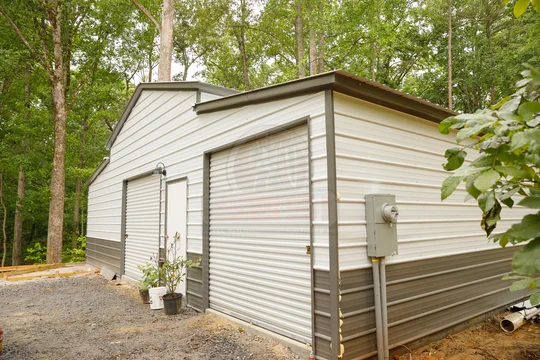Custom Garage Buying Guide
Designing your own garage is one of the most viable investments that are as home-accentuating as they are productive. But much like any other creative or home improvement project, going into the custom garage design process both prepared and well-positioned is the key to solidifying favorable outcomes. Because of that, below is a comprehensive overview on the intricacies of designing your own garage from an objective lens – all with a core initiative to ensure your time, energy, and monetized efforts render you the results you deserve.
Pre-Custom Garage Design Considerations
Prior to making any blueprint plans, the first step is to align your visions with the land and environment you are working with. For example, what are the common weather conditions where you live? If you are located in an area with heavy rainfall, wind or is prone to snowstorms, this is something you will want to use as a foundation to ensure the material and structural layout you go with can withstand the elements (i.e., choosing from a regular, boxed eave, or vertical roofing style).

Keep in mind that designing your own garage for extremely cold conditions is fine due to metal being one of nature’s most thermal conductors. But if you want your custom metal garage to reach optimum performance, be sure to use the correct size and spacing of the substructural framing. This will also help if notions like the panel attachment method, sequence, and framing style have been tested in strong wind conditions. Other considerations include:
- Sizing and Placement: Be sure to scope out your landscape, know what your intentions are in terms of storing, and perform the proper measurements based on those two factors. For instance, designing your own custom garage for an SUV will likely be much larger than storing traditional seasonal equipment. Furthermore, guarantee that your placement is level and accessible for both your use and for the crew who will be performing the conduction.
- Understand The Legalities: Heavily contingent state by state and county by county, be mindful of your area’s building and zoning laws before undertaking any construction. This can ensure that you are complying every step of the way and eliminates your risk of any hefty fines or structural warnings. For example, building overtop of underground wiring or piping can be prohibited in some areas. In addition, it is highly recommended to consult with your local building department to address if any certifications or design blueprints are necessary to proceed.
- Steel Gauge Framing: Blending into the pre-review of your environment, the steel gauge framing you select will ultimately determine the strength of your custom garage design. By definition, steel gauge framing is the thickness of your metal, and in measurement terms, the higher your gauge number is, the thinner your steel will be. Though the ideal thickness is not a one-size-fits-all scenario, the most common selections are 12 and 14-gauge steel framing. To put it in a real-life example, a 12-gauge steel frame would better suit those living in harsher environmental conditions.
- The Creative Logistics: How many windows do you want? How about doors? What about the color? Overall, the beauty of a custom garage design is that you have a full say on how you want it to look. So be aware of your options, such as bows or trusses, color matching or contrasting, anchors or no anchors, bay doors and walk-in doors, and of course, how much lighting you’d like to let in via window installation. There aren’t right or wrong answers here, just outcomes based on preference and objectives.
Most Importantly, Choose The Right Manufacturer
Not all manufacturers are created equal, so the final step is to do your due diligence and choose the one that places quality over quantity and results over profit. These are manufacturers that will optimize your successes through unbiased insights, professional consultation and whose objective is to transform your vision into a tangible reality. This is the foundation that SBSI has built its team and configurator/designer tool around. In the end, there are many moving parts and decisions to be made when designing your own garage, but connecting with the right manufacturer is the key to ensuring you are working alongside professionals who value the trajectory of your custom design successes just as much as you do.

Why Buying a Steel Garage is a Smart Move?

5 Versatile Uses for Metal Barns During Winter

